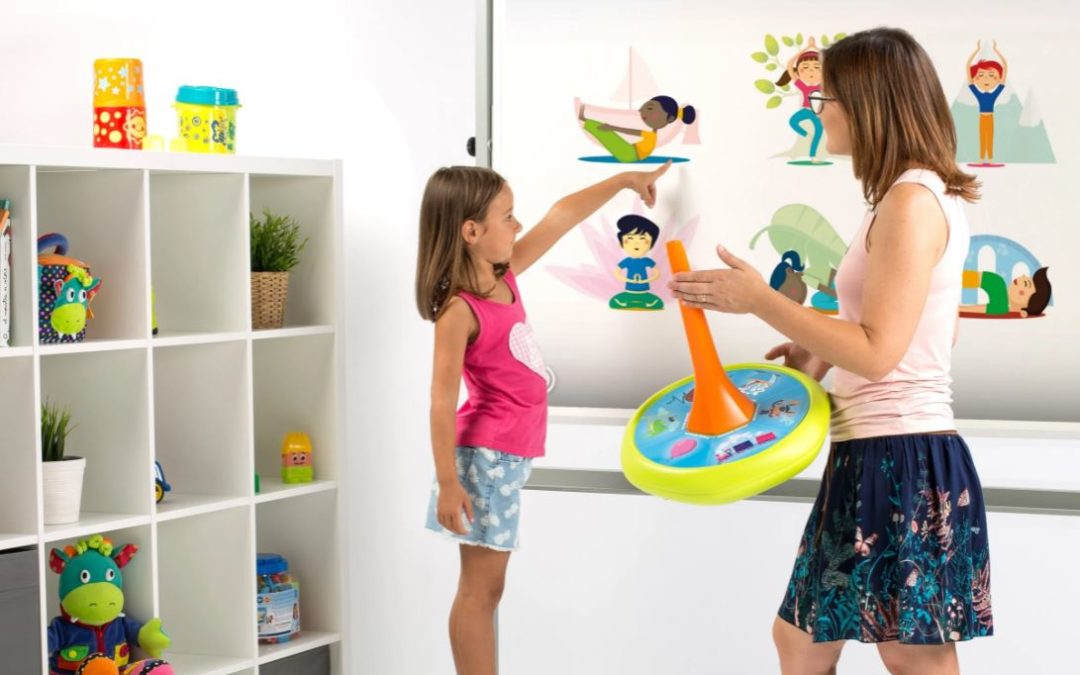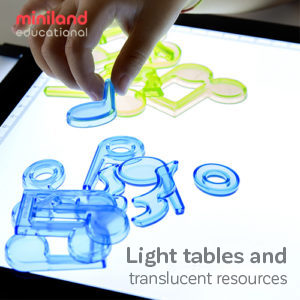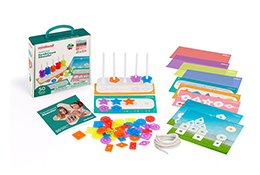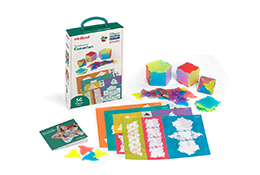An ideal classroom is a place where each child has the space to learn the same content as their peers, in a way that best suits their learning style
The 7 learning styles are:
- Visuospatial
Children who learn in this way need to picture things in order to understand them. Drawing diagrams and making flashcards are examples of the types of activities that help this kind of learner rely on their spatial ability to understand concepts and remember content.
- Aural
Auditory-musical learners rely on their sense of hearing to understand their world. Activities that allow them to listen and recite information helps them best, and group discussions are excellent forums for this.
- Linguistic
People who learn best through verbal stimulus rely on activities that use written and spoken word as the primary way to work with content. For example, one way to teach content to a linguistic learner is through a learning aid like Miniland’s Dictate & Shape. This one tool helps you explore multiple concepts, such as geometry, through dictation games that also promote active listening, mental agility and critical thinking in the class as a whole.

- Kinesthetic
Learning in this way means relying on physical engagement. Kinesthetic learners do best when they can explore concepts in tangible ways that allow them to work with their hands and whole bodies. For example, they’d learn about the Platonic solids by modeling them out of clay or drawing them in the air.
- Mathematical
This type of learner is analytical, logical and reasons through things systematically in order to come to conclusions. Activities that place what they know in context of what they are learning works well, as it taps into their strength with pattern recognition.
- Interpersonal
This is a social learning style. These kinds of people learn best in groups, from their peers and through socially-oriented activities which has everyone reaching conclusions and solutions together.
- Intrapersonal
Intrapersonal learners are solitary, independent and self-motivated. Self-study and individual activities are particularly suited to them, and they often prefer having time to digest the information before making use of it.
One working theory in Education is that successful skills development in children is possible if you cater to these 7 categories of learning styles in the classroom. Planning lessons to cater accordingly, however, can be challenging, especially when teaching on a budget and under pressure. We share some tips that help you make systematic shifts to the learning environment that enable you to efficiently and inclusively deliver content in a differentiated way. And the key to this is a general development in mindfulness.
Mindfulness is the skill of being relaxed and rooted in the present. Mindful kids are resilient, independent and calm even under stress. Practicing this form of non-judgemental focussed attention grows each child’s ability to learn in ways not necessarily easy for them, and to feel less distressed when encountering new information in non-intuitive ways.
These 4 simple strategies will ensure your classroom turns into a hotbed for generating mindfulness in a way that best supports all 7 learning styles.
Focus on the learning environment, not the lesson
Spend time turning your classroom into a multipurpose learning tool that supports any content you may have to cover. Make it a place your students want to meet and learn about new things in general. This means taking time to design the space strategically, ensuring each type of learning style is catered for. For example, a multipurpose carpeted space can allow kinesthetic learners space to move around while taking part in lessons and class discussions. Positioning this space at the back of the classroom ensures they don’t disturb visuospatial learners who learn best by taking notes and independently creating a private language of visual cues in order to remember information.
Develop mindfulness as a general skill
Make time for specific daily exercises that develop mindfulness. Spending just 10-20 minutes per day in meditation and similar reflective states will find you reaping the benefits of mindfulness in your classroom. Miniland’s Mindful Kids program is one learning aid that makes it possible for you to work a proven set of 36 exercises into your daily plan, even if you don’t have previous personal experience with mindfulness practices. Better yet, their Play Miniland extension and didactic guide make it especially easy for you to weave in existing curriculum content into your chosen daily exercise in a way that ensures that taking this time out doesn’t mean falling behind.
Make use of learning aids
Establish a core collection of multi-purpose learning aids that you can station around your strategically designed classroom. These aids can be used across multiple lessons and remain in place as themed learning stations. For example, Miniland’s ABC Monster is a game that stimulates physical engagement with language by requiring children to feed “the monster” letters in the correct order to make whole words. This can be played alone or in groups and be the focus of an English lesson, or act as an auxiliary that, for instance, supports linguistic learners to understand new content by allowing them to find and make the words for it. In this way, you begin to create a playful world for your students in which recognizable toys can constantly be re-purposed in fresh ways to grow with them as they learn.
The most important thing to remember is that you’re never alone in your quest to deliver the best education. At Miniland, we’ve devoted our time to supporting skills development in children by creating a range of educational toys and learning aids that suit every learning style and your pocket. Find out more on how to make the best use of the catalog by reading our blog today.




